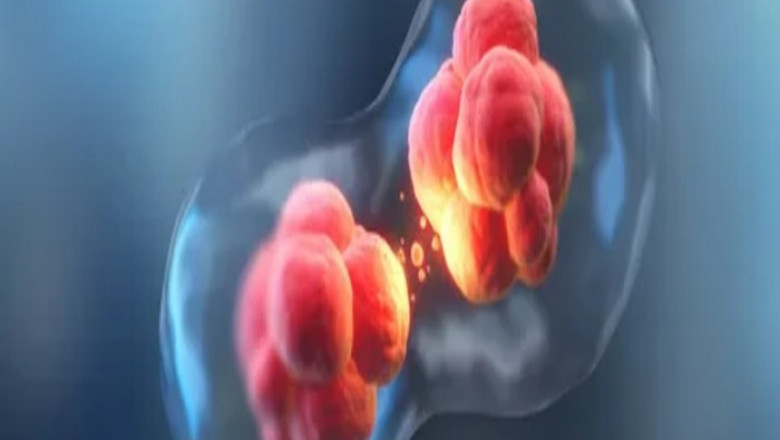views
Cell separation is a process that separates different types of cells from each other in a mixed cell population. This process plays an important role in various research and clinical applications where isolation of specific cells is required. Some common uses of cell separation include isolation of stem cells, immune cells, and cancer cells. The purity and viability of separated cells is crucial for many downstream applications. Therefore, accurate and efficient cell separation techniques are very important.
Methods of Cell Separation
Physical properties-based separation
Cell Separation of the earliest and most basic methods of cell separation relies on exploiting differences in physical properties of cells such as size, density, or surface electric charge. Examples include centrifugation, filtration, and electrophoresis. Centrifugation uses centrifugal force to separate cells based on their size and density. Lighter cells settle above heavier cells after centrifugation. Filtration separates cells based on their size by passing the mixed cell suspension through filters of defined pore sizes. Electrophoresis separates cells based on their surface charge by applying an electric field.
Antibody-based separation
With advances in molecular biology and antibody generation techniques, antibody-based cell separation methods have become popular. These methods exploit the ability of antibodies to bind specifically to target antigen proteins present on certain cell types. In this approach, antibodies specific to the target cell type are first attached to a solid support system like magnetic beads, columns, or microfluidic chips. The mixed cell suspension is then passed over this antibody-coated support. Cells expressing the target antigen bind to the antibodies and get separated from other non-target cells in the suspension.
Fluorescence activated cell sorting
Fluorescence activated cell sorting (FACS) is a laser-based, high-speed, and high-precision method to separate cells. In this method, cells are first labeled with fluorescent antibodies targeting specific antigens. These fluorescently labeled cells are passed in a fluid stream through a laser beam. A detector measures the fluorescence emitted by individual cells and based on the fluorescence signal, electrically charged droplets are formed around each cell. Application of an electric field directs these droplets to specific collection containers, effectively separating the targeted fluorescent cells from the mixed population. FACS allows multi-parameter separation based on multiple fluorescently labeled markers.
Magnetic activated cell sorting
Magnetic activated cell sorting (MACS) utilizes magnetic microbeads coupled to antibodies targeting cell surface antigens. Like the antibody-based technique, the cell suspension is first incubated with these antibody-conjugated magnetic microbeads. When placed in a magnetic field, the magnetically labeled target cells bound to the microbeads are separated, while unlabeled cells are removed in the flow-through. The magnetically separated cells can then be collected for downstream applications. MACS provides high separation efficiency and purity from large volumes of mixed cell populations. It is a robust, rapid, and easy technique for clinical-scale cell isolation.
Other separation techniques
In addition to the above mentioned techniques, dielectrophoresis exploits dielectric properties of cells to separate them using non-uniform electric fields. Acoustophoresis utilizes contrasting acoustic properties and standing acoustic waves to separate cells. Lab-on-a-chip devices based on microfluidics integrate multiple steps for automated separation and analysis of rare cells from small sample volumes. Separation techniques are constantly being improved through innovations to achieve high purity, viability, automation, and scalability required for various applications. The appropriate technique is selected based on the target cell phenotype, sample complexity, purity requirements and scale of separation.
Applications of Cell Separation
Isolation of stem cells
Isolation of specific stem cell types from heterogeneous tissue samples is important for stem cell research and therapeutic applications. Antibody-based separation techniques help purify Adult stem cells from bone marrow, umbilical cord blood or adipose tissue based on cell surface markers. FACS and MACS enable separation of Mesenchymal stem cells, Hematopoietic stem cells and Leukemia stem cells. This aids in studying stem cell biology, tissue engineering and developing stem cell therapies.
Separation of immune cells
Cell separation aids characterization and functional studies of immune cells involved in health and disease. FACS is used extensively for immunophenotyping lymphocytes based on cluster of differentiation (CD) markers. Dendritic cells, Monocytes, Natural killer cells and others can also be purified using antibodies to cell surface proteins unique to each population. MACS helps researchers prepare highly pure immune cell subtypes for assays and experiments. Clinically, enriched T cells are being used in immunotherapies for cancer and infectious diseases.
Isolation of tumor cells
Cell separation techniques help isolate circulating tumor cells from blood or tumor cells directly from solid tumor tissue for cancer research applications. Antibody-based methods help purify epithelial tumor cells based on expression of antigens such as EpCAM. Genetic and molecular characterization of these rare cancer cells is providing new insights into metastasis. Clinically, isolation of circulating tumor DNA from blood using separation devices aids non-invasive cancer monitoring and quantification of treatment response.
In the cell separation is a key enabling technology with wide applications in research, clinical diagnostics and therapeutics. Advances in separation methods are expanding our understanding of stem cell biology, immunology and oncology.
Get This Report in Japanese Language: 細胞分離
Get This Report in Korean Language: 세포 분리
About Author:
Vaagisha brings over three years of expertise as a content editor in the market research domain. Originally a creative writer, she discovered her passion for editing, combining her flair for writing with a meticulous eye for detail. Her ability to craft and refine compelling content makes her an invaluable asset in delivering polished and engaging write-ups.
(LinkedIn: https://www.linkedin.com/in/vaagisha-singh-8080b91)






















Comments
0 comment